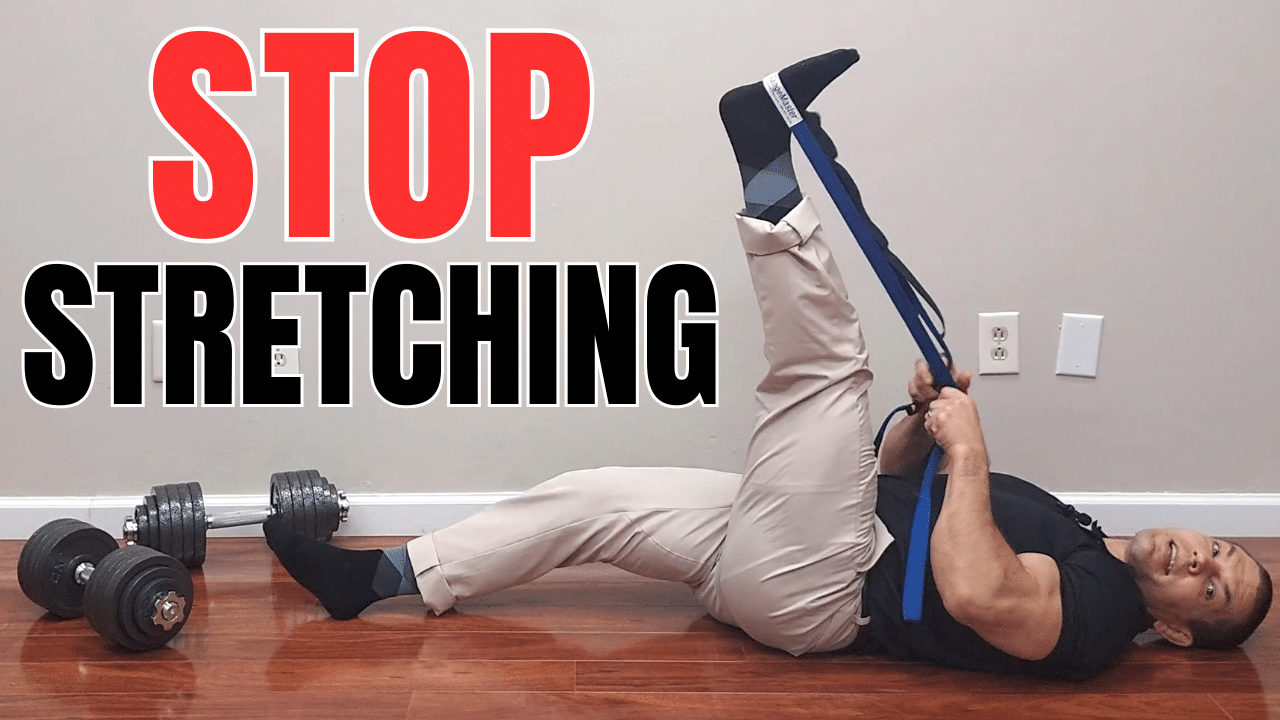Have you ever wondered why stretching feels good in the moment, but within minutes or hours you feel stiff again? Watch the video below to learn why you feel tight after stretching and how to make lasting improvements in your flexibility.
Table of Contents
- Why muscles feel tight after stretching
- Common causes of persistent stiffness
- A 3-step system for lasting flexibility
- How to apply it — Hamstrings
- How to apply it — Hip flexors
- How to apply it — Upper trapezius
- Sample session and sets
- Wrap up and next steps
Why muscles feel tight after stretching
Muscle tissue is alive and wired to your brain. Your nervous system controls how long muscles relax or stay tense.
When your nervous system thinks a muscle should protect you, it keeps that muscle tighter. Stretching does not always change that protective signal.
Common causes of persistent stiffness
Here are the main culprits that make you feel tight again.
- Low-level sustained tension: Small motor units work for long postures. They can fatigue and form trigger points.
- Muscles held short: Sitting keeps hip flexors short and more resistant to lengthening.
- Rare end-range use: Hamstrings often never reach full length during daily movement.
- Protective guarding: The brain tightens muscles to protect joints or nerves when it senses risk.
A 3-step system for lasting flexibility
To change stiffness, we need to change the nervous system and the muscle. Use three techniques together.
- Autogenic inhibition (contract-relax): Contract the muscle, then relax and lengthen.
- Reciprocal inhibition (hold-relax with opposite): Activate the opposing muscle so the target muscle relaxes.
- Slow eccentrics (lengthened strengthening): Strengthen the muscle while it lengthens to make the new range stick.
How to apply it — Hamstrings
Step 1: Contract-relax with a strap. Pull the leg up, push down into the strap for 5 seconds, then relax and pull higher. Repeat five times.
Step 2: Hold-relax using the front thigh. Lift the leg and gently contract the quads to hold the position. Repeat five times.
Step 3: Romanian deadlift for eccentrics. Hinge slowly for 4–7 seconds down and stand up using the hamstrings. Do 10 reps.
How to apply it — Hip flexors
Step 1: Lying quad/hip flexor stretch with strap. Pull the knee up, resist by pushing the knee down for 5 seconds, then pull further. Repeat.
Step 2: Hold-relax by activating glutes. Use the glutes to hold the lifted thigh and let the hip flexors relax. Repeat five times.
Step 3: Band resisted eccentric. Attach a strong band, let it pull you into hip extension, and slowly use hip flexors to return. Struggle a bit on the way up.
How to apply it — Upper trapezius
Step 1: Seated side bend with hand over head. Gently pull and then push your head into your hand for 5 seconds. Relax and pull a little farther. Repeat.
Step 2: Activate lower/other shoulder muscles to help lengthen the trap during the hold phase.
Step 3: Shrug with slow lower. Use light dumbbells, shrug up, and lower slowly to an extended position. Do 10 slow reps.
Sample session and sets
Here is a simple template you can follow.
- Warm up 5–8 minutes of light movement.
- For each muscle group: 5 reps contract-relax, 5 reps hold-relax, then 10 slow eccentrics.
- Do 2–3 muscle groups per session. Repeat 2–4 times per week.
Keep each stretch comfortable. Avoid sharp pain. Progress slowly.
Need More Help To Relieve Tight Muscles?
If you live in the St. Louis area, tap the button below to request an appointment.

